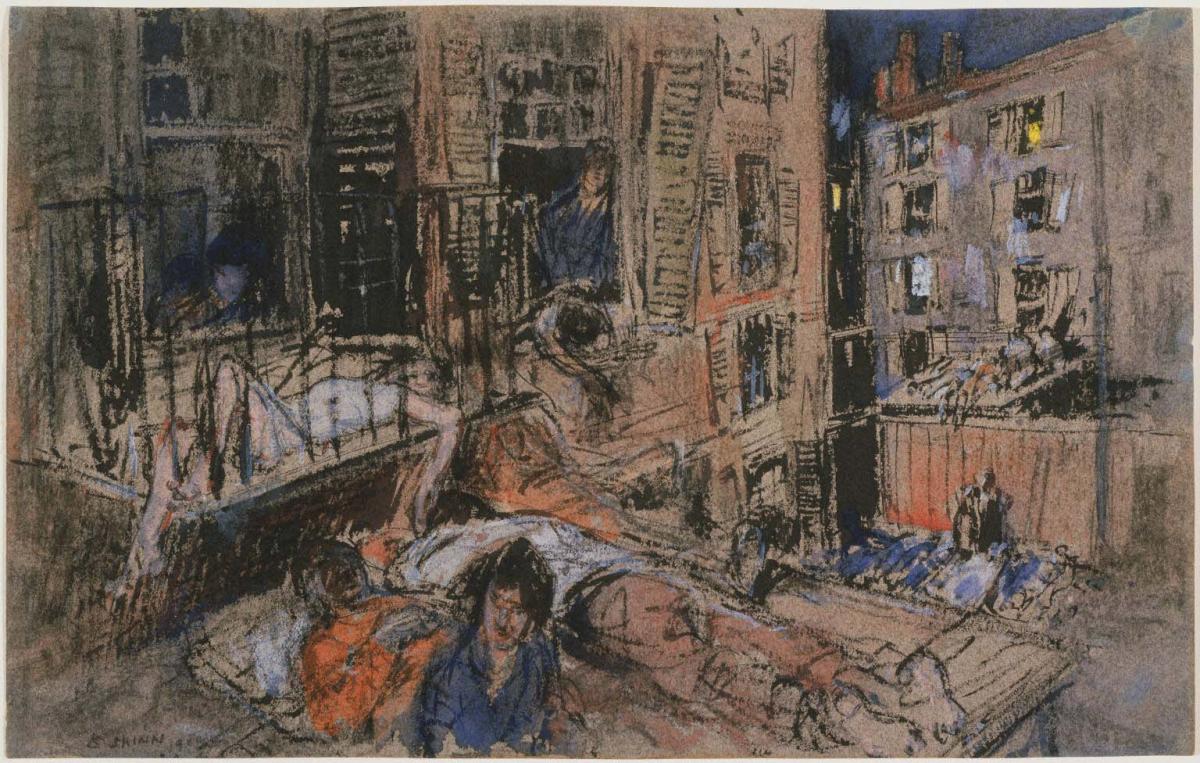Tenements at Hester Street
Everett Shinn ( 1900 )

Tenements at Hester Street, in the artist’s words, depicted “squalid tenements, children huddled on rags on fire-escapes, [and] families side by side on a caved-in roof,” which was typical of Everett Shinn’s early work. He preferred to show the poor, dilapidated neighborhoods of New York. He said, “The people and the buildings are complementary… . Lines are broken here and there, buildings and odd little shops are harmonized with one another, and the ensemble speaks to anyone who stop and listen … they say: ‘I suffer.’”
Tenements at Hester Street was an illustration intended for the book New York by Night, by William Dean Howells. It is said that this drawing made such a significant impact as to have inspired Mrs. J. Pierpont Morgan to open a haven for the poor on the Lower East Side of Manhattan. When Mrs. Morgan questioned whether the drawing represented truth, Shinn answered, “truth, but understated—as odor could not be given unless I dropped my drawing in refuse.” Years later, Shinn recalled that he had endeavored to show the “alternate gaiety and drabness” of New York in his illustrations.
Tenements at Hester Street also reflects his radical sensibility in technique. Shinn would have been influenced by his time as a newspaper artist. The swift execution of line and the summary treatment, nearly caricature, of the figures and buildings indeed suggest a reporter’s earnest attempt to record an incident on deadline. Shinn often worked from memory; he had a flawless, nearly photographic recall and was able to retain an “on the spot” quality while working in his studio. He may have employed his innovative manner of applying pastels, drawing with pastel directly into a wet ground. When the medium struck the surface, the color disappeared, leaving behind a dark tone. As the picture dried, the original color returned, but contrary to the dust-like quality of pastel, the pigment dried hard, producing brilliant color that is often mistaken for tempera, gouache, or watercolor.
Duncan Phillips purchased this drawing in 1943, when he intended to exhibit work of The Eight and realized that he owned no work by Shinn. Phillips deliberately chose an early work by Shinn, believing, like Shinn’s colleagues, that he had become a sell-out, producing “echoes” of his old work.